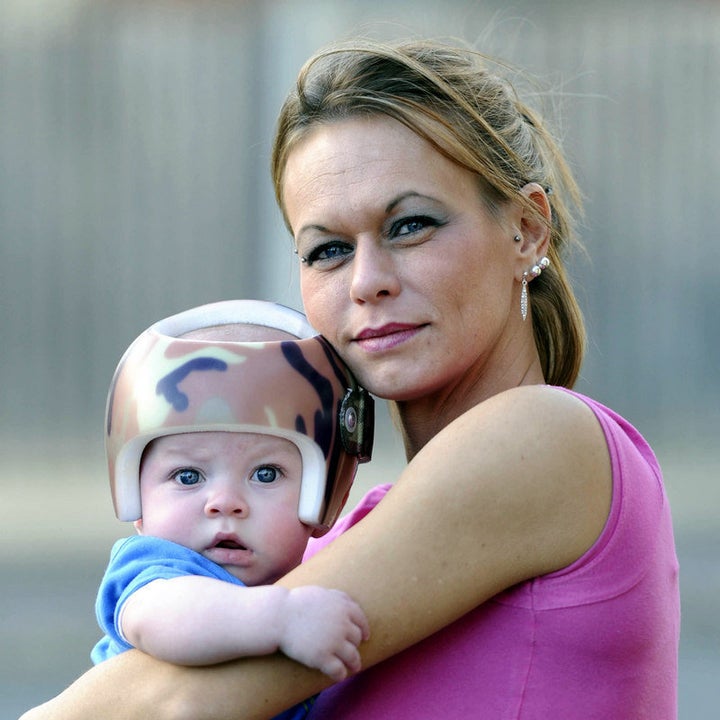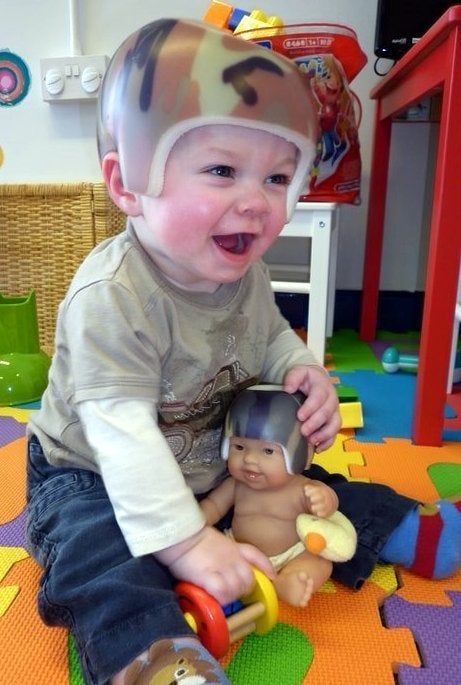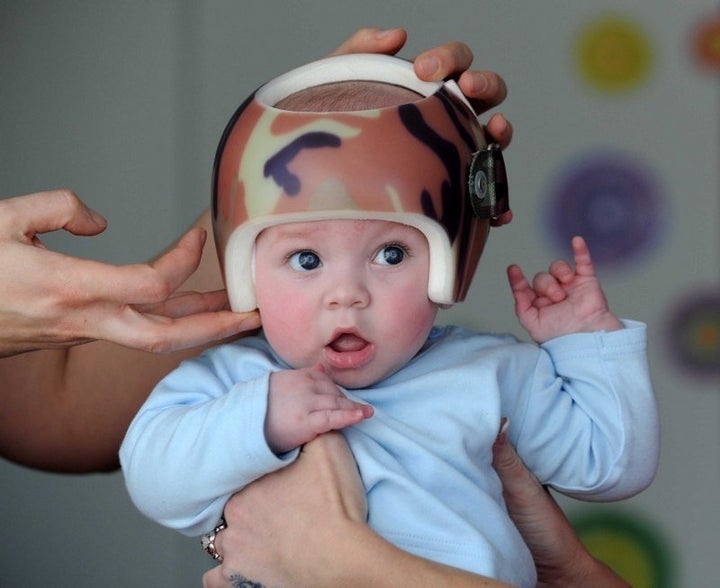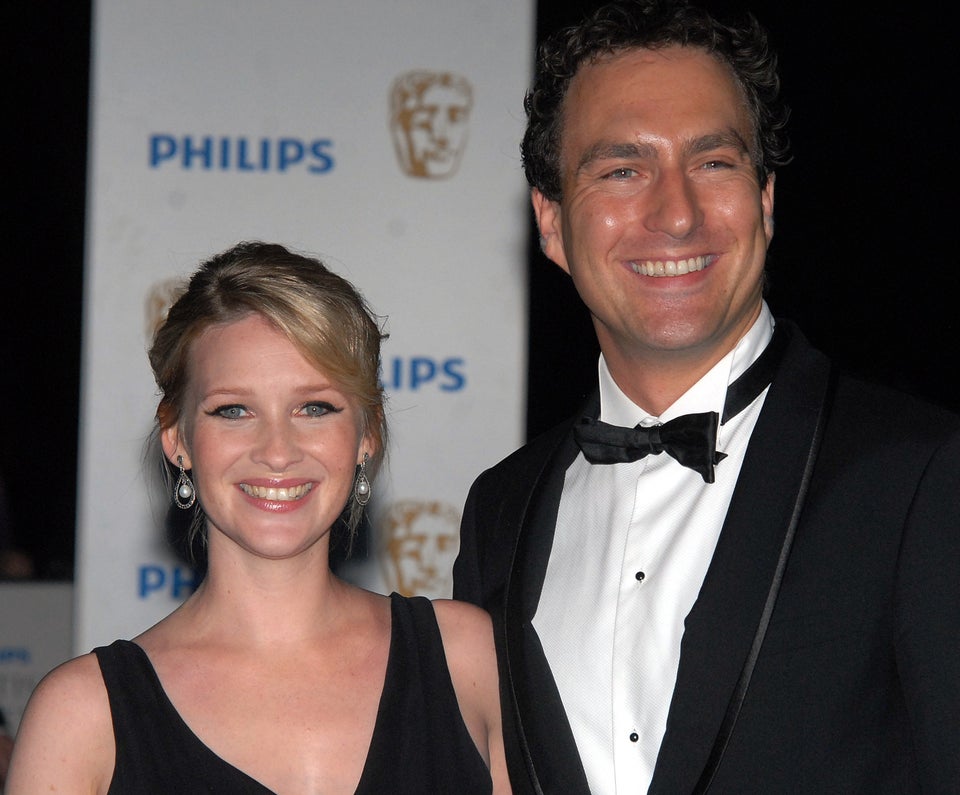A mother whose son was diagnosed with plagiocephaly - also known as "flat head syndrome" - has opened up about the little-known condition in a bid to raise awareness.
Aileen Sergent, 35, said when her son Loki was just a few weeks old, she noticed the size and shape of his head looked different.
But as a first-time mum, she said many health professionals put her worries down to being "overprotective".
"It was gut instinct," Sergent told The Huffington Post UK. "I wasn't happy and had this feeling in my heart something was wrong.
"I wasn't going to stop until I found out."

Plagiocephaly is when a baby develops a flattened head, usually as a result of them spending a lot of time lying on their back.
It is caused by pressure on the soft skull bones, which have not yet fused, and become moulded into a different shape.
The number of babies developing plagiocephaly is increasing - 13 years ago, just 5% of babies developed the condition, according to Great Ormond Street.
But now as as many as 50% of babies show symptoms, and of those who are diagnosed, 19% will suffer some degree of physical developmental delay.
Sergent said she had noticed Loki's head seemed flat at the back just a few days after he was born and it got worse as the weeks went on.
She'd never heard of plagiocephaly before, so wasn't aware what was causing it.
Sergent said when she asked medical professionals and health visitors whether they thought something was wrong with Loki's head, no one mentioned the possibility of it being plagiocephaly.

"My family could see where I was coming from," Sergent explained. "BUt maybe even they felt that I was going overboard a little bit, but I just knew something was wrong.
"When I went to the doctor he said: 'Stop looking at his bad points and concentrate on his good points'.
"I went for a second opinion but I was still getting the same story."
Sergent said the first time she considered the possibility of her son having plagiocephaly was after she began looking on Google for answers.
She came across the symptoms of the condition online and got in touch with a private clinic in Leeds.
"They knew straight away," she said. "We went for an initial assessment and he was scanned that day.
"The results came back to say he was 'borderline severe' and was recommended to have a helmet straight away."
Loki was officially diagnosed with plagiocephaly when he was 16 weeks old.
The most common treatment for plagiocephaly is wearing a corrective helmet for a period of time. These specially-designed helmets help improve the shape of a baby's skull as they grow.
They apply pressure to "bulging" parts of the skull and relieve pressure from other parts, allowing growth in the flatter areas.
Treatment is started when the child's skull is still soft and the device is worn almost continuously for several months.
Such treatment is currently not available through the NHS and can cost upwards of £2,000, making it unobtainable to many parents.

Sergent paid for private treatment for Loki. His head was scanned and the images were sent off to America where his helmet was made.
Two weeks later, he went for his first fitting and had adjustments made to ensure it was comfortable.
Loki needed to wear his helmet was for 23 hours a day, but Sergent said they had to build up to this amount.
"The first day it was as little as an hour on, an hour off, and then two hours on, two hours off," she said.
"Within a week we were up to 23 hours. We would only take it off to clean the head and helmet, but Loki completely took it in his stride.
"He happily played and slept in it all the time."
The next 18 weeks weren't an easy ride, as Sergent and Loki went back and forth to the clinic to ensure the helmet was accommodating his head.
He would be re-scanned and the helmet would be adjusted.
But in the final weeks of treatment the specialists reassured Sergent that it wouldn't be long before the helmet would be off.
SEE ALSO:
Dehydration In Babies And Young Children: How To Spot The Symptoms
Dad Delivers Hand Washing Warning To Parents After His Baby 'Flatlined'
Dad Shares Shocking Photo Of Baby's Toe To Warn Parents Of Dangerous Condition 'Hair Tourniquet'
"It was amazing when Loki finally got the helmet off - we even miss it in some ways," Sergent said. "It was our protective barrier when he was crawling.
"I couldn't stop touching his head - he is absolutely fine now and it worked perfectly."
Sergent has since had a second child and she said she took steps to reduce the chance of him developing plagiocephaly.
She now urges new parents to be aware these precautions.
"Tummy time from birth is important," she explained.
"I even got a special mattress that was softer so it moulded more to the head.
"My advice would be to focus on repositioning the baby for the first six months, so they're not always laying on their back for long periods of time.
"With my second son I would make sure I was repositioning him in every way I could.
"I would carry him, keep him out of the car seat for a long time and make sure he had time on his tummy."
The preventative treatments recommended by the NHS include tummy time, varying the way baby is carried/handled, feeding on both sides, and strategically positioning mobiles and toys in their cots to change the direction of focus.
Sergent added: "If you haven't heard of it, you won't know what to look for but remember kids don't have to spend all their time laying down on their back."
Babymoov is supporting World Plagiocephaly Awareness Day to highlight the little known condition that affects half of all babies under the age of one.
